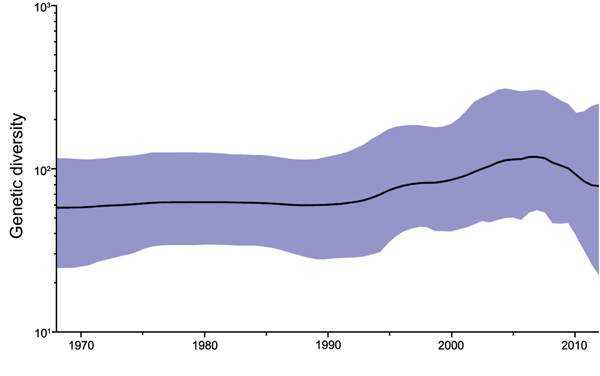Volume 20, Number 12—December 2014
Research
Molecular Evolution of Peste des Petits Ruminants Virus
Figure 4

Figure 4. Bayesian skyline plot showing demographic history of global peste des petits ruminants viruses sampled during 1968–2012. Genetic diversity was estimated by using a partial nucleoprotein gene dataset (n = 159). The thick black line represents median genetic diversity and the blue shaded areas show 95% highest posterior density estimate.
1Preliminary results were presented at the 15th International Negative Strand Virus Meeting, June 16–21, 2013, Granada, Spain.
Page created: November 18, 2014
Page updated: November 18, 2014
Page reviewed: November 18, 2014
The conclusions, findings, and opinions expressed by authors contributing to this journal do not necessarily reflect the official position of the U.S. Department of Health and Human Services, the Public Health Service, the Centers for Disease Control and Prevention, or the authors' affiliated institutions. Use of trade names is for identification only and does not imply endorsement by any of the groups named above.